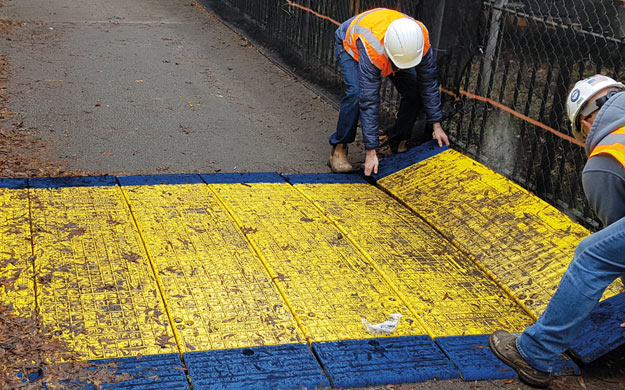The Main Principles Of Steel Road Plate
Wiki Article
See This Report on Road Plate Steel
Table of ContentsIndicators on Road Plates You Need To KnowThe Road Plate Steel PDFsGet This Report about Road PlateLittle Known Facts About Road Plate.
Box culverts are cost-effective due to their strength as well as monolithic activity and also different foundations are not needed. It is made use of in unique instances, weak foundation.Typical compaction requirements for a task might range from 90% to 95% of standard Proctor for non-structural locations to 98% or even more of modified Proctor for greatly loaded sidewalks. Proctor tests are dirt moisture-density partnership tests that develop optimum dry density (the unit weight of the soil minus the weight of water) and also the optimum water material for dirt samples.
Water is contributed to four to six sections of the dried soil sample in raising amounts. Each ready portion is settled into a compaction (proctor) mold and mildew with a Proctor Hammer or Mechanical Dirt Compactor and then is evaluated and also dealt with for moisture content. The dry thickness enhances as the included wetness oil the dirt bits and also make it possible for better compaction from the very same used energy.

9 Easy Facts About Road Plate Steel Shown
Thickness and also dampness results are outlined versus the original lab curve to confirm a match. In situations where laboratory info is not readily available, the area point outcomes may be contrasted to a household of curves compiled from regional or regional dirt information to choose the best maximum thickness and optimum moisture curve.A soil compaction examination utilizes among a number of methods to gauge the dry thickness and moisture content of the soil in position. The three most common are reviewed right here - road plates. Arise from these field tests are compared to the Proctor examination results of the exact same dirt developed in the lab and the ratio is revealed as the percent compaction.
1ft (2,830 g/cm). Thickness test accessories such as mallets, scoops, knives, and also sample bags are made use of throughout excavation. All the dug deep into material is meticulously these details gathered and conserved in an airtight container. The pre-weighed Sand Cone Density Device is inverted onto the base plate as well as the steel cone is snuggled into the base plate opening.
Afterward, the partly filled apparatus is considered once again, and also the quantity of the test hole is calculated by dividing the mass of the sand filling the opening by the mass thickness of the sand. The damp weight of the recovered excavated soil is separated by the test opening quantity to determine the wet density.
Top Guidelines Of Road Plate
The percent compaction for the area thickness examination is determined by dividing the dry thickness of the dirt by the maximum dry density from the proctor examination. Pros, Disadvantages, Accurate and also trusted; a long history of approved use, Examinations might take half an hour or more to complete, ASTM typical examination technique, Heavy devices in the location might require to stop briefly procedure briefly, Does not need extensive training, Different examinations must be used where considerable amounts of +1 - steel road plates.
The examinations are a little bit simpler to carry out than the sand cone and can be repeated promptly because the water is retained in the vessel. Pros, Cons, Accurate as well as dependable; a lengthy history of approved usage, Tests might take 15-20 minutes or even more to complete, ASTM standard examination method, Balloon membrane my blog layers can pierce during screening, Does not need considerable training, Meant for fine-grained or granular soils without muches of crude material, No licensing or permitting needed for usage, Ought to not be utilized to check soft saturated, very plastic soils, Multiple examinations can be done without transforming thickness media, All dug deep into product has to be very carefully gotten rid of, Equipment is affordable Wetness web content as well as unit weight should be performed on kept soil samples from either a sand cone or rubber balloon examinations to finish computations for dirt compaction.
The graph below programs a couple of different approaches that can be used for wetness decisions as well as there are a selection of ranges as well as equilibriums that can be made use of for evaluating dirt samples in laboratory or area setups. Nuclear density gauges identify dirt thickness by measuring gamma radiation transmission between a probe consisting of a contaminated Cesium 137 (or other) source and also Geiger-Mueller detection sensing units in the base of the scale.
The 30-Second Trick For Steel Road Plates
Dirt wetness is determined at the very same time utilizing a different resource of Americium 241. A steel pole is driven into the dirt at the examination site, creating a pilot opening. The probe containing the contaminated source is reduced approximately 12in (305mm) right into the pilot opening, and radiation transmission is gauged for one minute.
Report this wiki page